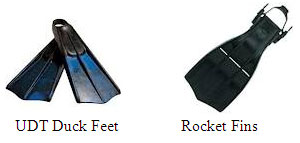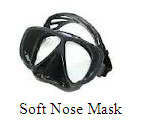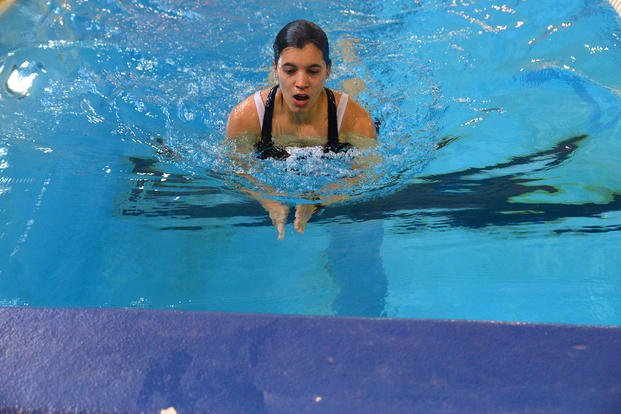People often email me asking about swimming skills and techniques to get better in the water. Here are many tips that you can use to improve your swim times and confidence in the water.
Buy some swim trunks: One of the simplest ways to get better in the water is by wearing proper swim gear. I recently was coaching some college students in the combat swimmer stroke and kept advising them to buy a pair of swim trunks and stop wearing the long, baggy board shorts to try to learn how to swim.
I tested them one day in baggy shorts, and they swam in the 10:30- to 11-minute zone for the 500-yard swim. With no extra instruction, I tested them again two days later when they wore biker-style swim shorts. One improved from 10:30 to 9:45, and the other dropped from 10:50 to 9:30.
Just by wearing a real pair of swim trunks, they dropped 45-80 seconds off their 500-yard CSS swims. I know that this information is elementary to swimmers, but you would be surprised at how many people do not realize this:

Prepare with fins: 99% of your swims in any Spec Ops-related course will be with fins. At BUD/S, you will swim all of your timed ocean swims in fins, even though to get into BUD/S, you have to swim without fins. Learn how to do both on your pre-BUD/S fitness journey.
I recommend SCUBA fins with dive booties. They will issue you UDT Duck Feet or US Diver Rocket Fins at BUD/S, so if you are looking for a pair of fins, buy those. If you have a sturdy pair of SCUBA fins, those are fine. Wearing a thin pair of slip-on flippers will not cut it, though. You need something to prepare your ankles for the long ocean swims and dives done in sturdy SCUBA fins. Here is a common email:

Recently I bought a pair of Rocket fins and booties. Up until now, I have been using soft fins for your workouts and I have been able to fin 1 mile under 30 minutes with soft fins. With rocket fins, however, it feels much more awkward and painful. It seems as if my arm-pulls get me more propulsion than the flutter kicks with rocket fins.
1. Is there a specific technique to swimming with rocket fins? Does the kick have to be a certain width? It seems that bigger kicks give me a stop/start movement and interrupt my momentum, but while smaller kicks give me constant movement, they still don't seem to propel me that fast.
There is a technique to swimming with fins, but no one best way. We all have different kick strengths. I have found that athletes in sports like football and soccer may not be the best swimmers without fins, but when they place a pair of SCUBA fins on their legs, they are faster than most people in the class. This is because they have well-developed leg and hip strength and can use bigger kicks to build speed.
Some athletes with weaker legs and hips tend still to swim fast, but they are required to kick, using smaller strides at a faster pace. You have to find out what works best for you. You will want to learn how to swim on both sides as well, because you can alter your kick as long as your top leg always extends forward on both the left and right side. Learning to swim on both sides offers a form of rest by changing the pull/push stride of your left/right leg.
As far as arm pulls and breathing as pictured in the video, the arm pull can be used as another method of propulsion, especially if you need to rest your legs by skipping a few kicks throughout a long-distance swim. Many people like to do a slight pause of kicking when breathing and recovering the arms forward again to remain streamlined. As with any swimming, recovering your arms should remain streamlined and not an obstacle to forward motion.
2. The fins seem to cause pain in my feet after a couple hundred yards and stiffness up the front and side muscles of my shins. Is this just a matter of conditioning and getting my feet used to wearing these fins?
It is a matter of conditioning. When first wearing fins while swimming, you should swim only a few hundred yards and push slightly past discomfort in the ankle and shin area. Do not push too hard and for too long at first; overuse injuries like tendinitis in the feet and knees can flare up, causing you only to be able to swim or run with severe discomfort or injury.
This process usually takes about 10-15 swims or 2-3 weeks of swimming with fins. It is recommended to swim 500 meters with fins, and if they start to bother you, take off the fins and swim 500 meters without, then try fins one more time until discomfort returns. Do this for a few weeks, and you will be able to add greater distances each time you swim.
Mask or Goggles? In any Spec Ops training program, you will wear a mask, so it is smart to start training with a mask, versus a pair of goggles. However, prior to BUD/S, you are not allowed to swim the 500-yard swim (at boot camp) wearing goggles, so get used to it without goggles as well. I like any soft nose mask made by Dacor or US Divers.

Quick workouts:
- 300-meter timed swim
- plus 5 x 100-meter sprint
- 200-meter warmup
- 10 x 50-meter sprints (rest 30-45 seconds)
- 500-meter cooldown
- Repeat five times.
- Sprint 100-200 meters
- Tread water for one minute (no hands)
Medium workouts:
- 20 x 25-meter sprints
- rest 10-15 seconds
- 10 x 50-meter sprints
- rest 20-30 seconds
Fast workout (may need to alter times) ...
- 100-meter pyramid
- Swim 100 meters (keep pace between 1:20-1:40 for all)
- Rest 30 seconds
- Swim 100 meters
- Rest 30 seconds
- Swim 100 meters
- Rest 30 seconds
- Swim 100 meters
- Rest 30 seconds
- Swim 100 meters
- Rest 40 seconds
- Sprint 100 meters - ______?
Repeat in reverse order but rest with a 50-meter slow swim/breaststroke/backstroke, etc. ...
- 500-meter warmup
- 5 x 100-meter sprints
- 5 x 50-meter kickboard
- 5 x 50-meter arm pull only
- Swim 500-2,000 meters with or without fins nonstop
Prep for BUD/S
One- or two-mile swim with fins
Getting harder hypoxic:
- Swim 100 meters (four strokes/breath)
- Swim 200 meters (six strokes/breath)
- Swim 300 meters (eight strokes/breath)
- Do PT for five minutes (push-ups/abs)
- Swim 4 x 100 meters at 8-10 strokes/breath
- Rest 30 seconds each 100 meters
- Do PT for five minutes (pushups/abs)
Standard hypoxic pyramid:
- 100 meters at four strokes per breath
- 100 meters at six strokes per breath
- 100 meters at eight strokes per breath
- 100 meters at 10 strokes per breath
Keep going if you wish, then repeat in reverse order. (A rest of 20-30 seconds in between is optional.)
You should strive for about 1,000 meters.
(All hypoxics are done using the freestyle stroke.)
Hypoxic workout:
- Swim 300-500 meters (four strokes per breath)
- Six strokes per breath
- Eight strokes per breath
- Total distance of 900-1,500 meters
Other questions/ideas on swimming:
The Combat Swimmer Stroke: See the glide video to learn how to do it efficiently.
Swimming Without Water?: Work the same muscle group as you do with swimming, but for best results, swim to get better at swimming.
Swim PT/Hypoxic Swimming: These are great workouts to do in the heat of the summer and cold of the winter (indoor pool).
Triathlon Training: Want to mix it up and try a triathlon? Here is a fun starter plan.
Underwater Swimming Training: Underwater swim without water -- Learn to hold your breath and move efficiently to maximize the swim distance without maxing out your breath and passing out.
Stew Smith is a former Navy SEAL and fitness author certified as a Strength and Conditioning Specialist (CSCS) with the National Strength and Conditioning Association. Visit his Fitness eBook store if you’re looking to start a workout program to create a healthy lifestyle. Send your fitness questions to stew@stewsmith.com.
Want to Learn More About Military Life?
Whether you're thinking of joining the military, looking for fitness and basic training tips, or keeping up with military life and benefits, Military.com has you covered. Subscribe to Military.com to have military news, updates and resources delivered directly to your inbox.



















